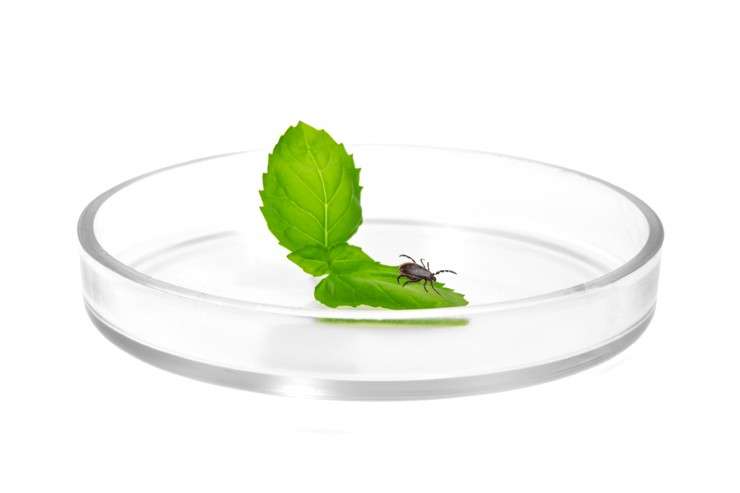Researchers investigate four promising new treatments for Lyme disease

The ticks that transmit Lyme disease have multiplied aggressively over the past 20 years, and now thrive in half of all counties in the U.S., according to a recent study in the Journal of Medical Entomology.
So it's no surprise that when Northeastern researchers reported last May how the bacterium that causes the disease evades antibiotics, suggesting new treatments, the media and the general public took notice.
University Distinguished Professor Kim Lewis, who leads the Lyme disease research team, is now expanding that therapeutic reach with the help of a $1.5 million grant from the Steven and Alexandra Cohen Foundation.
The team is pursuing four arms of treatment-related research at Northeastern's Antimicrobial Discovery Center, which Lewis directs.
They are: a mouse study of a regimen that eradicated the bacterium in the test tube, setting the stage for human trials; antibiotic cocktails using existing drugs; strategies to discover new drugs that selectively target the Lyme bacterium; and ways to alter the composition of the microbiome—the community of microorganisms inhabiting the human body—to stop the autoimmune reactions that characterize the disease.
All four show exciting promise. The grant, Lewis says, "will give us the flexibility to test our approaches in parallel, which will save us an enormous amount of time."
Preventing chronic disease
Time is of the essence. According to the Centers for Disease Control and Prevention, about 300,000 people are diagnosed with Lyme disease in the U.S. each year. The disease is transmitted by ticks primarily carrying the bacterium Borrelia burgdorferi, though a new less prevalent bacterial species, Borrelia mayonii, was identified by Mayo Clinic researchers in February.
If Lyme is caught early, patients generally recover quickly when treated with antibiotics, primarily doxycyline. However, 10 to 20 percent of patients go on to develop a debilitating chronic condition called Post-Treatment Lyme Disease Syndrome, or PTLDS, with symptoms that include extreme fatigue, arthritis, muscle pain, and cognitive difficulties.
"I find it amazing that when you show up at the doctor's office you are not told that there is a 10 to 20 percent chance that your life as you know it has ended," says Lewis. "Nobody seems to be focusing on the next step: How to prevent the subsequent rise of the chronic condition."
A new regimen
Lewis and his colleagues are providing that focus. A subpopulation of B. burgdorferi cells, they discovered earlier, are "persister" cells—they are alive but lie dormant, in a sporelike state. Because antibiotics attack only actively functioning bacterial cells, persisters escape the onslaught. However, once the antibiotic has been flushed from the system, the persisters "wake up," says Lewis, dividing and multiplying until an army of progeny infect the host.
That's where "pulse dosing" comes in. Lewis' team, in collaboration with researchers studying B. burgdorferi in mice at Tufts University's Sackler School of Biomedical Sciences, has been analyzing the effect of giving the mice an antibiotic that kills all the actively functioning bacterial cells and then—using the timing that eradicated the pathogen in the test tube—giving additional doses to quash the persister cells as they begin to wake up but before they reproduce.
Plans are in the works for the first pulse-dosing human trials with medical schools.
Drugs combined and discovered
Doxycycline may be standard first-line treatment for Lyme, but, says Lewis, it doesn't even kill B. burgdorferi, it just suppresses its growth, leaving the rest of the work to the immune system. "We simply asked the question: 'Is it possible to combine existing antibiotics to treat not only chronic Lyme but any stage of Lyme if the diagnosis is unambiguous"
The researchers have already found combinations that are effective against the B. burgdorferi in the test tube and will move on to animal studies next.
They are tackling new-drug discovery on two fronts: Plumbing the 200,000-plus compounds in their collection at Northeastern to find the ones that act solely against B. burgdorferi to avoid unwanted side effects and, in collaboration with Novobiotic Pharmaceuticals, extracting drugs from bacteria that live in soil using the iChip, a device developed by Slava Epstein, Distinguished Professor at Northeastern, in collaboration with Lewis. The iChip provides access to the 99 percent of microbes in the environment that heretofore could not be grown in the lab.
"So far we have identified two lead compounds that kill B. burgdorferi and have no activity against other bacteria," says Lewis.
The researchers are also exploring whether the microbiome has "shifted" in those with PTLDS, to see whether introducing certain microorganisms might shift it back. Animal studies have shown that manipulating the microbiome composition alleviates symptoms of autoimmune diseases such as rheumatoid arthritis, which share many characteristics with PTLDS.
"We are going at Lyme disease with everything we have," says Lewis.
More information: Rebecca J. Eisen et al. County-Scale Distribution of and (Acari: Ixodidae) in the Continental United States , Journal of Medical Entomology (2016). DOI: 10.1093/jme/tjv237

















